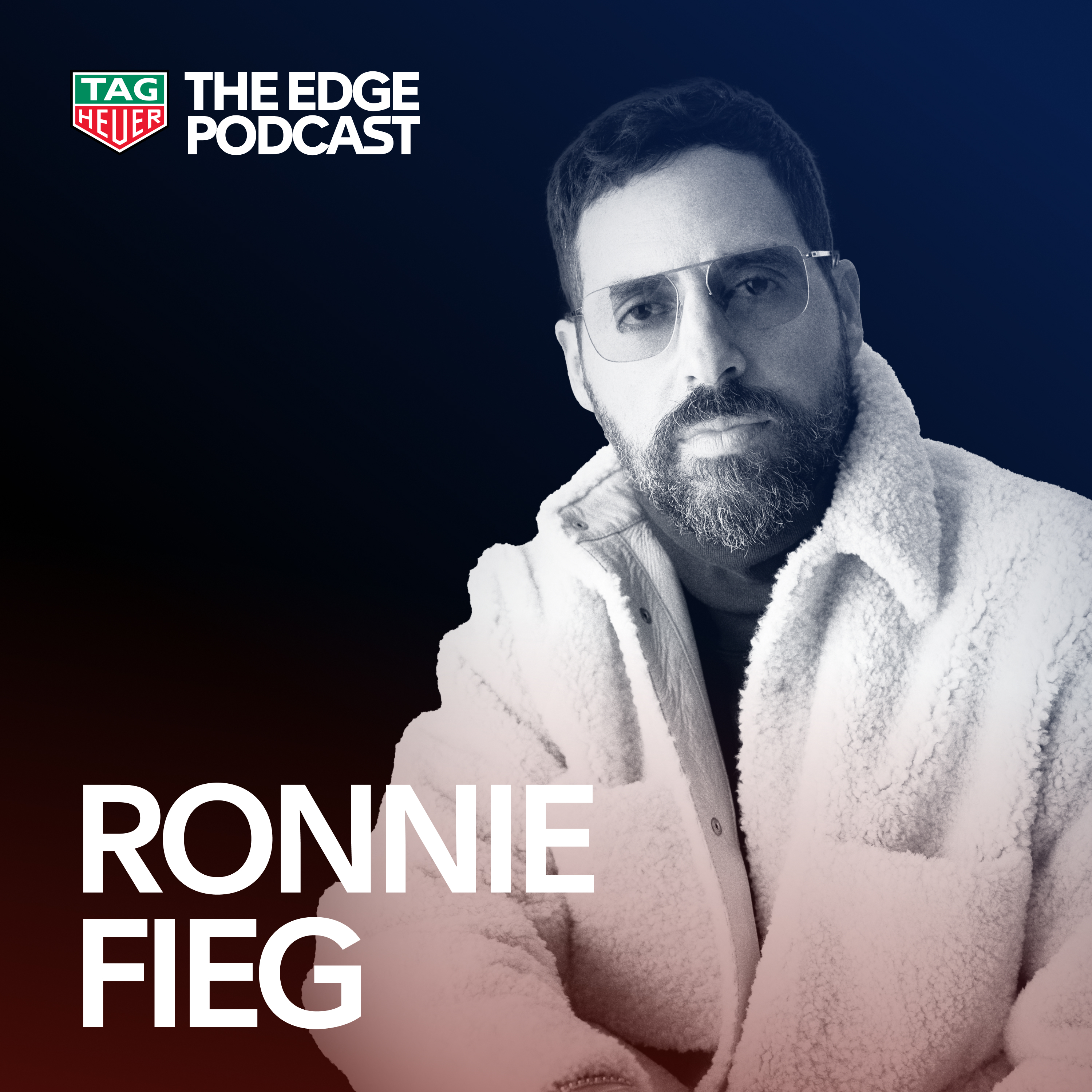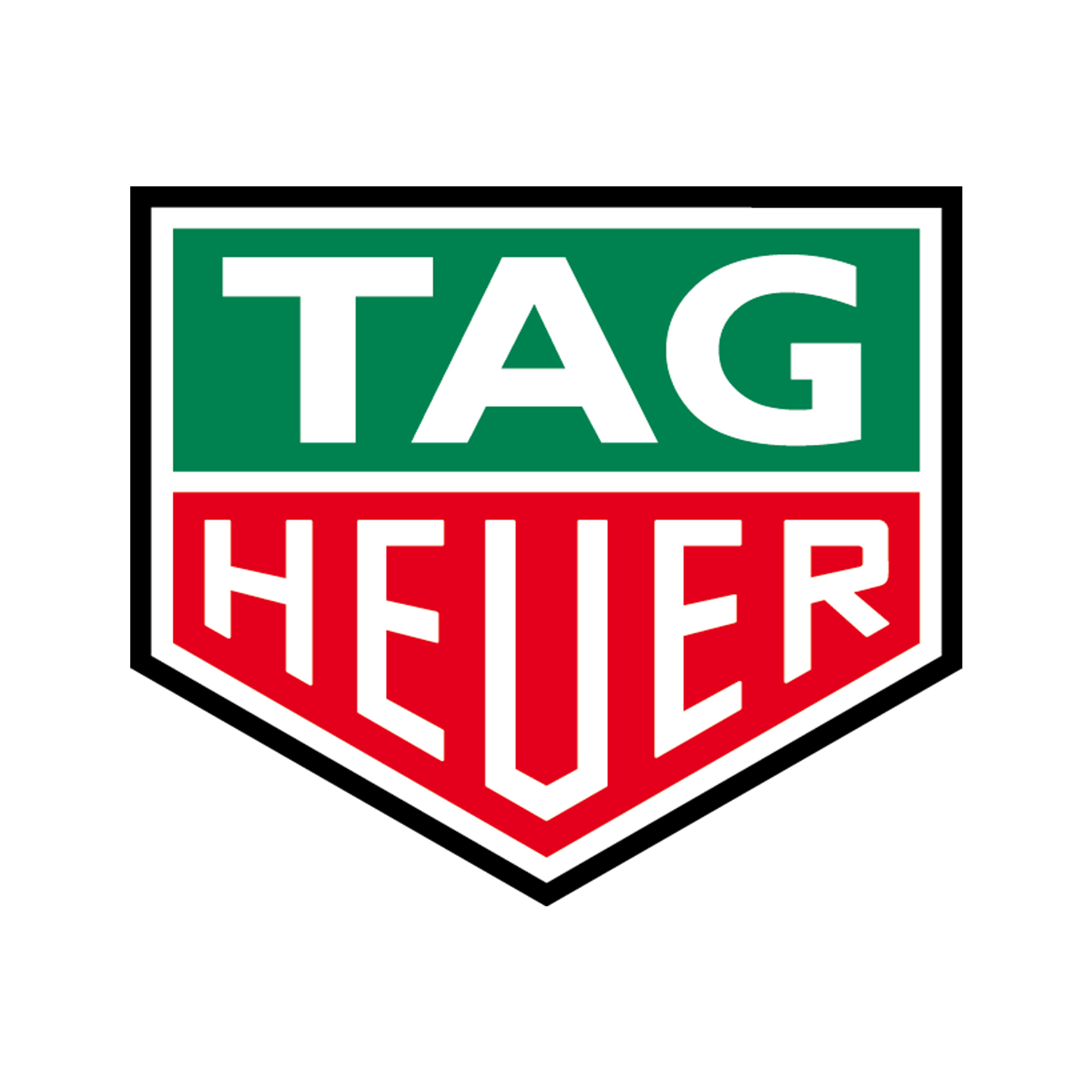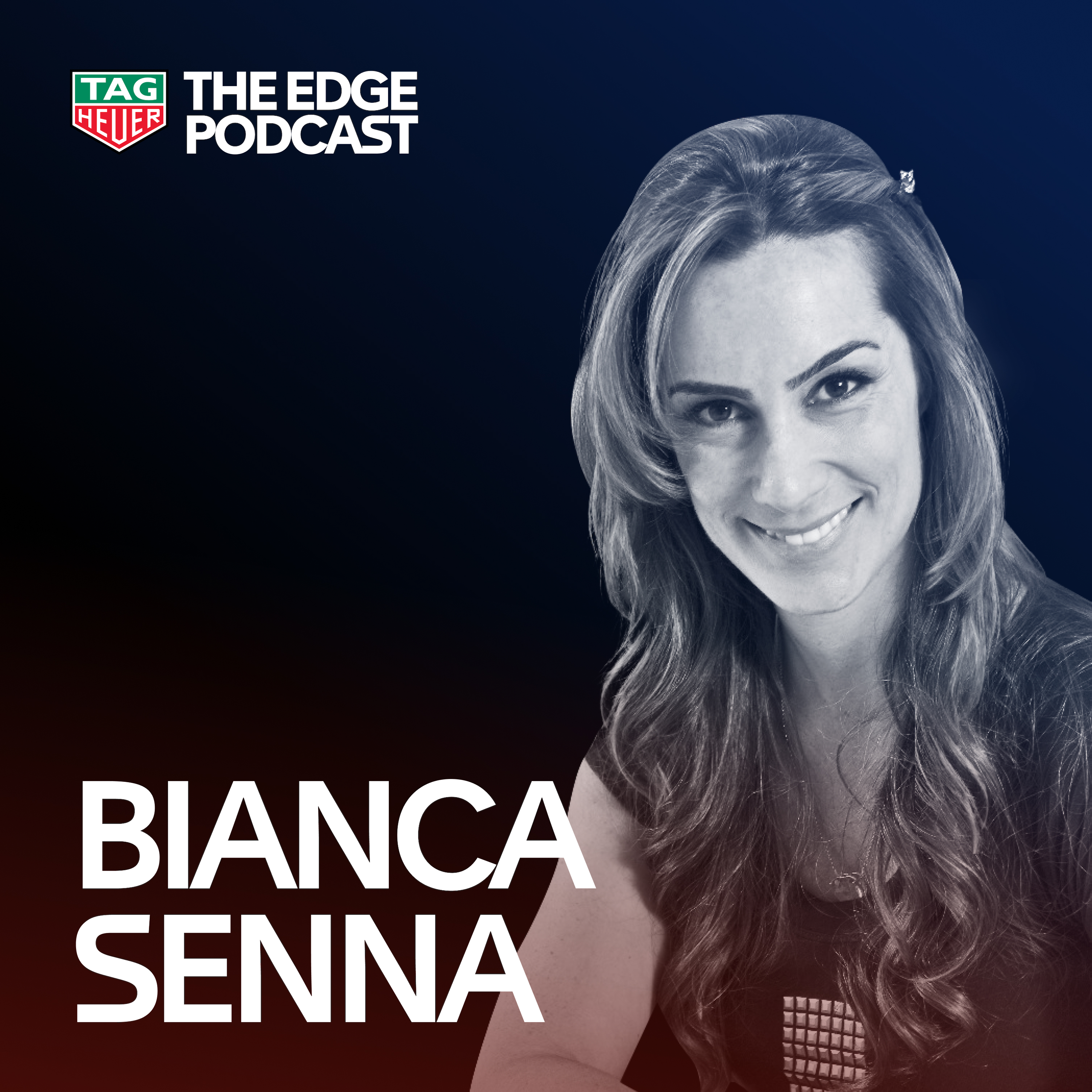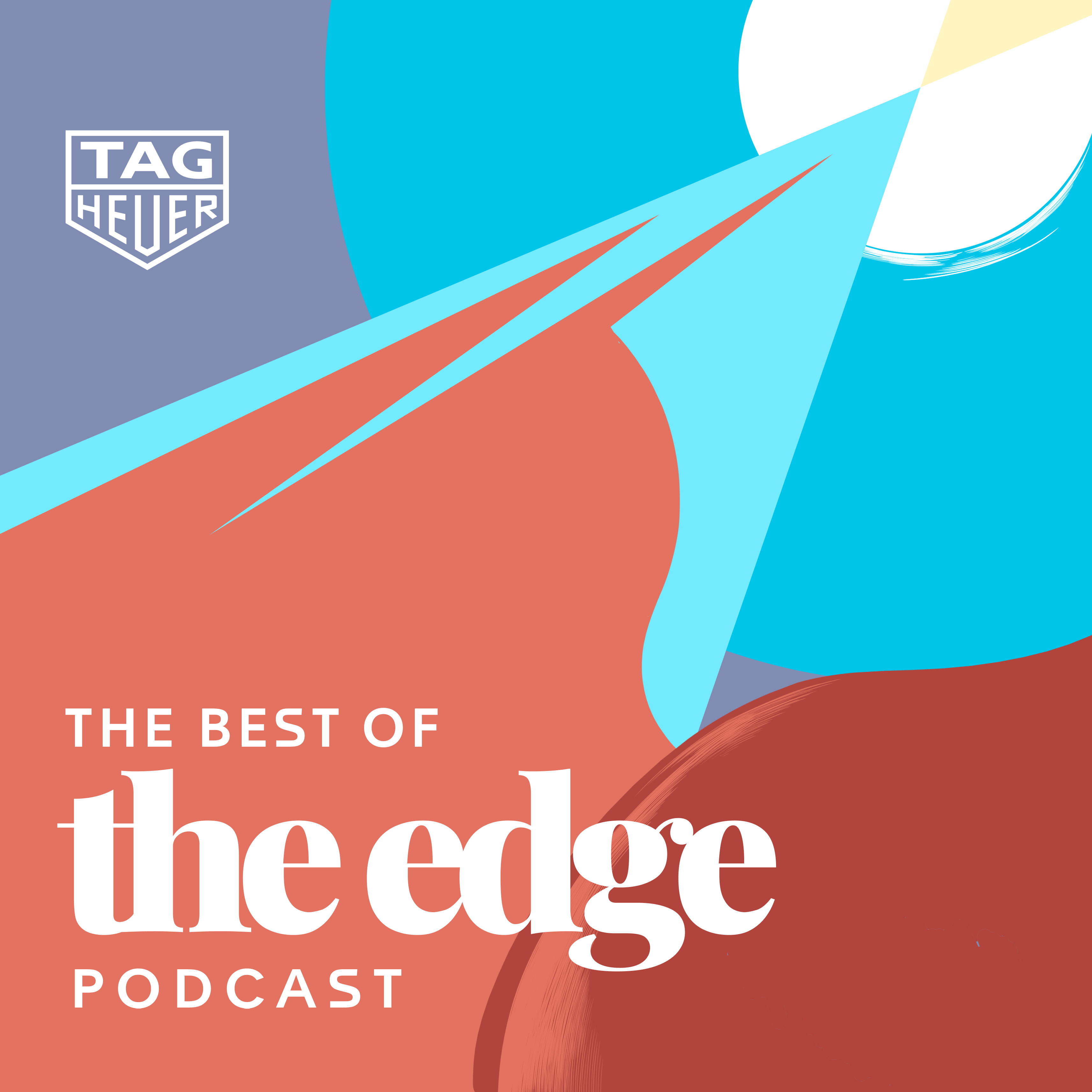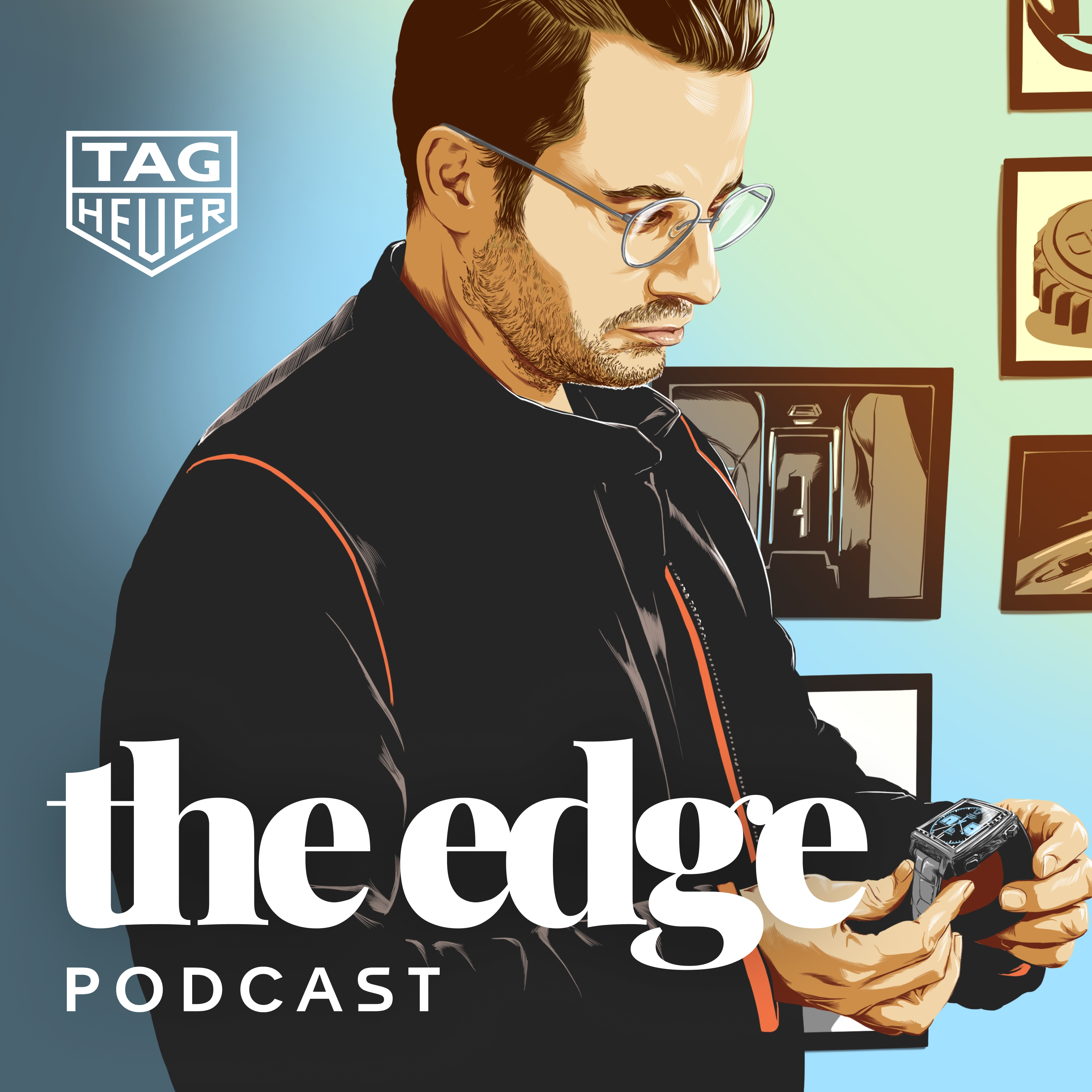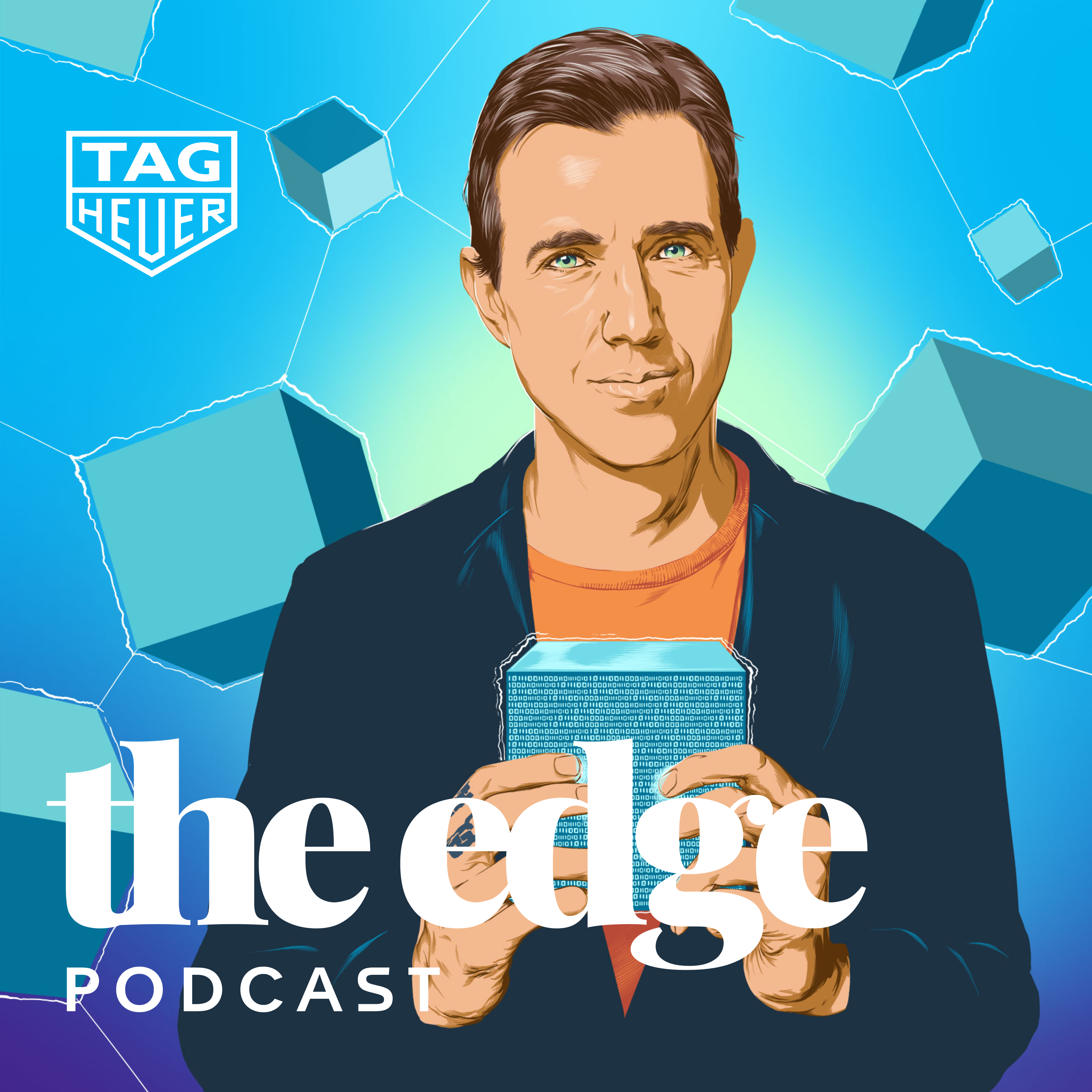Episode Transcript
[00:00:03] Speaker A: Welcome to the Edge, a podcast by Tag Hoyer. Our guest this time is Ronnie Feig, footwear and clothing designer, entrepreneur, and the founder of lifestyle brand Kith.
Through Kith, Ronnie seeks to shift the current landscape of fashion while operating under a personal philosophy of giving the consumer more than what they pay for.
In this episode, Ronnie recalls his early passion for fashion and the moments that led to the creation and the rise of Kith.
He also talks about his new collaboration with Tag Hoyer, the values behind Kith, and the challenges that he has faced in his career. The highs and the lows.
I'm your host, Naomi Schiff, and this is the Edge, a podcast by Tag Hoyer.
[00:00:57] Speaker B: Ronnie, thank you very much for joining us today for this podcast. I'm very excited to speak to you because Keith is a brand that I am very fond of. So I, first of all, want to start by asking you, where are you? That's what we ask our guests at the top of these podcasts.
[00:01:11] Speaker C: I am in Williamsburg, Brooklyn, at the Kith headquarters in my office.
[00:01:19] Speaker B: Fantastic. At work. Yeah, never leave the place of work.
[00:01:23] Speaker C: I guess, hard at work. You know, it's a beautiful day here. It's Thursday, and the Knicks play tonight, so I'm very much looking forward to that. And, yeah, we're all here, the whole squad.
[00:01:37] Speaker B: Fantastic. Awesome. Well, your passion for fashion and footwear goes way, way, way back, but I would love to understand where that passion comes from and if there's maybe a particular person or something that may have happened along the lines that inspired you to get into the world of fashion.
[00:01:55] Speaker C: I guess I would have to say my mom growing up, my mother really influenced me a lot because she has a very unique and eclectic style in the way that she dresses.
And then growing up in public school in Queens, I went to this elementary school called PS 178, where I met a few of my close friends that I had growing up, and one of them, his name is Joey, we both had older sisters, and they were both the same age. So both of our sisters were six years older than us, and they were going into the city, into Manhattan a lot and getting inspired there and bringing that back home. And I think that that's, you know, where both of us really took some inspiration. And then we both kind of fed off of each other. And, you know, between sports, music, and film, we were getting inspired by a lot of what was happening in the nineties, especially in the hip hop genre and in basketball, and what was happening, you know, in the basketball leagues across New York. Cause we were playing ball back then, you know, so all through my elementary years, I think that seeing so many cultures in Queens. Cause it was. Queens is the biggest melting pot in the world of different cultures.
I think that seeing so many cultures and so many different styles growing up really stuck with me. And that was the beginning. Fourth grade was really the beginning of me starting to pay attention to what sneakers I was wearing and the clothing between Tommy polo, Nautica, those were the brands that really jump started what I still am passionate about today.
[00:03:51] Speaker B: Well, you just mentioned you were inspired already by the age of fourth grade is when you started to pick out brands that you were really inspired by. But I hear that you also were already working in the industry from the age of 13. Tell me, how did that come about?
[00:04:06] Speaker C: In 1995, when I turned 13, I started working in the stock room in a chain of shoe stores in New York called David Z. And I would take the train. Cause I lived in on the last stop on the f train, 179th in Hillside. It would take about 45 minutes to 50 minutes to get to the city. So I would actually go Friday after school and then Saturday and Sunday on the weekends to go and work in the stock room. And David Z was a chain of ten stores by the time I left there in 2010. So I worked there for 15 years. And it was the area David Z had stores in a few different areas in Manhattan, but the village where I worked on 8th street was like the epicenter of culture in the nineties. So that's where people were coming in and buying, you know, whether they were buying their Timberlands or Clark wallabies or dolomites, danners.
You know, back then, it was Adams boots, Havana Joe's, Clarks, and all of the brown shoes and boots that were running the scene in New York City before athletic footwear really took over.
Those were the shoes that people were really looking for. It was really the epicenter of culture and style. And I think that seeing so many different types of people gravitate towards so many different types of products that we had really made me fall in love with product even more because I had the perspectives of these younger stars before they became superstars, they were, you know, shopping the store and gravitating towards different products. So, like Lauryn Hill from the Fujis or, you know, back then, it was like Mace or Nas or Az Wu Tang. You know, they were all. They were all coming in Nas, they were all coming in and shopping different products. So I got to see why people liked what they liked. And it made me like. It made me form my own sense of individuality and gave me reasons to love different products for different reasons.
[00:06:27] Speaker B: Well, in terms of work experience, I guess it doesn't get any more hands on or right in the mix than that. So that must have been an incredible experience. But from that point onwards, there were still a few steps on your journey until you came up with Kith. So I'd love to know, where did the story of Kith begin?
[00:06:45] Speaker C: It's part of the phrase kith and kin, which means friends and family. So Kith actually means friends.
And the idea of opening up the shop, the first shop was to offer a space where people can feel like they were coming into a friendly shop in the neighborhood and they could become part of a community, because back in 2010, there were a few shops in New York City that were basically offering these very limited footwear pieces that are highly coveted and had a very limited distribution. And that was, the concept was to offer very special product. But the retailers that were selling them, I think, had this.
You'd get a feeling like they were doing you a favor when you'd walk in.
They had an attitude that I thought, you know, I thought that people can, you know, it would want a space that they could come in and feel at home instead of being intimidated when they walk into a shop. So that was the concept behind the brand and the name.
[00:08:01] Speaker B: You were in the game for a number of years, almost over a decade before you started kith. But I'd love to know, was it a light bulb moment when you came up with the idea, or was it more of a process that took a little bit more time for you to come up with the lifestyle brand? Yeah.
[00:08:17] Speaker C: So 15 years in that footwear business taught me a lot, and it was really. It became a dream of mine early on to open up a certain kind of store that served different types of product than the product that I was selling at David Z.
So it became something that I wanted to do early on. I would say, like, from the age of 15 to 18. Like, I started to really flesh out the idea of what it is that I wanted to offer in the marketplace. And throughout the years after that period, I really started to put those ideas together and start to plan out what it would look like when I made my departure.
[00:09:03] Speaker B: Now, often the road to following your big dreams often takes big risks, and even sometimes, shall we call it, big leaps that make the journey to success. Not always that simple, but it often is worth it in the end. So I'd love to know from your perspective, if there were any challenges along your journey and if so, what they were?
[00:09:24] Speaker C: Yeah. I think that any entrepreneur that becomes successful has had to sacrifice a lot, and I think the challenges were more so if anything, like, on the personal side of what I've had to sacrifice to become a successful business within this market, because this market is tough. And I think that for so long, I always put this brand and this business in front of anything else that I could think of. And as you actually start to become more of a family person, as you build your family, I think that things change. And prioritizing time then becomes somewhat of a challenge of knowing when to do what and where to allocate your time. I think that that's been the most challenging part of my career, and it continues to be a challenge, of course, you know, and, you know, I have two. I have two girls, two baby girls. So one three years old, one three weeks old. So I think that being a great dad is also a very important priority of mine now. And it wasn't a priority in the past when before I had kids, so. So I think that the biggest challenge that I've had is time.
And I think that it continues to be this Rubik's cube of needing to figure that out day after day.
[00:11:07] Speaker B: I think that that's something that will speak to a lot of people, because especially entrepreneurs, as you say, you're not working on someone else's time. And although you have your two baby girls, this brand is your baby as well. And it's about finding the balance between the two.
[00:11:20] Speaker C: That's exactly right. And now I have three babies. So it's like, just trying to give the most attention that I can to all three. But this has really been a labor of love for me. So building this from the ground up, no matter what people say and what you hear, there's no easy way to do it, and there's no shortcut to get there. So it's been a lot of hard work. It's been a lot of hours. And they say 10,000 hours is what you need to commit to something to be successful. I think it's been over 100,000 hours for me now. So it's just. It's a lot. And what I take pride in the most is the team that we've been able to put together here and now. I have some really incredible people surrounding me that in some cases, know a lot more than me in different categories of the business. And that's the most important part of it, is surrounding yourself with people that know more than you do. So you can learn, because once you stop learning, that's the day you die. So it's very important to continue to evolve and be a sponge.
[00:12:31] Speaker B: Absolutely. Well, you touched on some of the challenges there and you started to describe the fantastic team that you work with. But I'd love to touch on the highs now as well and sort of understand from your perspective, what makes it all worth it.
[00:12:45] Speaker C: Asking some tough questions.
I mean, what makes it all worth it is when I see people wearing the product that I'm here to create.
And I think that product, in some ways, obviously, we're not curing cancer and reinventing the wheel here. But what I think we are able to do is we are able to change lives by a very small percentage. But that percentage matters to me. And we're able to change lives by offering incredible product that people feel emotionally attached to and certain things, like, for example, if I was to give you a cupcake right now, that would change your day for the better. And to give you and uplift you for that moment is an important part of anyone's day, is to be uplifted and be emotionally attached to anything they do, you know? So whether you have a hobby of, you know, sports or film or music, you know, a lot of people within our market are very emotionally attached to the product that they wear. And it's part of their individuality, you know? And I think that the journey that some people have had following us and evolving with us throughout the years, they've been able to be a part of this evolution where the product has gotten progressively better and they're seeing it through my lens, which to many people make them feel relate, they feel related, and it's more relatable to the brand when they see it through a person's lens. So I think that the journey has been incredible. And it's not like we're looking at the blueprint. There is no blueprint to follow.
There's no book I can read as to like, you know, how and when we do certain things, it's really been learning on our behalf of having to continuously one up what we've done in the past. And that feeling has grown stronger and stronger over the years for what we've been able to accomplish. So some of these projects that we work on, including, obviously this one with tag, that those are milestones for myself personally, but also notches in the timeline for the brand. So there are before and after moments at the brand, and these huge moments change our brand and evolve our brand. And it's always for the better. Because for me, it's like I'm trying to accomplish as much as I can in my lifetime. And I've been able to do a lot through the brand and what the brand has been able to achieve. So that's what it means, you know, is it all, it's all worth it for me when we are able to change people's lives for the better. And when I say that, it's not like I'm looking to cure anything or like I'm just trying to make people feel a bit happier with the product they buy and give people more than what they pay for. That's always been the motto for us.
[00:15:58] Speaker B: Absolutely. So that brings me perfectly onto something. I wanted to ask you about your philosophies around customer relations or how the customer interacts or experiences your brand. What's so important with you about your motto of customer receiving more than what they paid for?
[00:16:15] Speaker C: It's a great question. I think that the experience that people have, most importantly in the shops, so the investment and the time that we put into building our stores, I think is the most important part of people's experience with the brand.
And when we say give people more than what they pay for, people don't pay for the spaces that we build. That's our investment. And we overspend purposely into giving people an experience where they can spend a part of their day going to the shop and feeling great about what they're able to either buy or what they're able to do when they come to the shop, whether they're reading a book, looking through, sifting through a magazine, getting ice cream at the shop, at gith treats, able to meet their friends there, just to meet like minded people, to discuss product, hang out with the staff.
Those are the most important parts of the experience, of what people can experience when shopping the store. And we always have worked backwards from people coming in and just smiling when they leave the shop, whether they're buying something or not. It's like we just want a better people's day. And I think that that concept has then turned into some of the shops that you see today, where we open a sedel's, for example, in Paris, and we bring bagels to Paris. Right? And that's an experience that I think we've been able to give Parisians that they haven't had elsewhere. And just the ability to do that is never taken for granted. For me, you know, that's something that I consider to be a blessing, is the ability to serve people and to give people an experience that they haven't had in the past so that we can affect people's lives and for them to then care about the brand and emotionally attach themselves to the brand in various ways.
[00:18:21] Speaker B: Fantastic. Well, you mentioned it just a few moments ago, the collaboration with Tag Hoya. Now you've successfully been doing collaborations for a very, very long time. What makes this one stand out?
[00:18:33] Speaker C: This is a very important moment for myself because I have a history with Tag and I just, I went on talking watches with Ben Clymer to talk about the history that I have with my first watch being the f one. And I think that working on this type of product, it's the first time we're working on this type of product. So I think that that alone separates itself. Being able to work with tag and co brand the Red Bull cars. You know, I think that having our co branded logo on a f one car, on a racing car, is something I never imagined possible. And that's the best part of what Kith has been able to do, is year after year, we're doing the impossible. And to do it with tag on this stage is just.
I can't even explain the moment. It's like when I speak to people about it internally, it's like we still can't believe that we're able to do these type of. To work on these type of projects.
It's something that I can never get used to. And every big moment, like I said before, becomes a notch in the timeline of our brand. And this is definitely one of the biggest notches to date. And the watches themselves, like being able to bring back the f one in its original form, where we haven't seen these watches since the early two thousands.
It's a major moment.
It's a couple of decades pass and then you're able to see product that you cared about so much when you were younger. It just, it ignites for me. It ignites a fire.
You know, that I am always looking to feel. I'm just always looking to feel that way. So this is going to be one of the bigger emotional moments of my career because I'm able to wear my first watch again.
And then that watch that we bring back is, in our design, with a co branded logo, you know, with one of the biggest watchmakers in the world. So it's. These are, these are huge moments. And the car, the drivers, like, that's just the, that's the cherry on top, but it's like such a massive cherry, you know what I'm saying? It's like it's. You can't get used to it. And just talking about it, I think, gets me emotional, because next week we're going to go to the race. We. We have an incredible weekend planned with tag in the way that this is going to roll out. And the most important part of this is being able to basically pass this feeling on to others. So when we create these assets and then start to roll them out on our social, that emotional story is then transferred over, and it's going to allow other people to feel the way I feel. And that is the most important part. I don't know why I care so much about that, but I've always cared about that. I've always cared about passing that feeling on to others so that they can feel about product the way I feel about product.
[00:22:10] Speaker B: Well, my next question was going to be what attracted you to reviving this incredible timepiece and, you know, the cultural defining formula, one watch? But I think you've described it perfectly already, so we don't have to go too far further into that. I actually have seen the watches on the press release, which hasn't come out yet, and they look fantastic, so I can't wait to see them in the flesh.
[00:22:32] Speaker C: Oh, thank you. Which one is your favorite?
[00:22:35] Speaker B: The cream one, probably. The cream one's my favorite. Yes.
[00:22:39] Speaker C: Yeah, that's the Miami color. You know, it's like, that's the beautiful part about what tag has done or what tag did in the nineties with these watches is that all of the colors were so bright. It was like, it was such a dare, you know, it was daring to come out with these type of colors and the excitement that it then generated. And it quickly became a classic because the way it made people feel, you know, it's. And when you look through the watches and you have a favorite, that's the. That's what it's all about. It's like people being able to buy into their favorite. And that's why we created the amount of watches that we did. So that there's something, I think, for everyone there. Yeah. And then there's the box set also, where there's only 75 of those made, and those are individually numbered for the collector. We really spent a lot of time thinking about the project holistically and making sure that we give the enthusiasts something special, but we also give someone who wants to come into the game for the first time buying their first watch. We wanted to give them an opportunity to feel the way I did when I had my first watch. And that's the whole premise behind the project.
[00:23:55] Speaker B: Well, I have no doubt that you will be able to pass on that feeling, because just looking at them felt really fun. It felt very racy. And although I had a favorite, it was quite a tough pick. I also liked the red and black one, even the blue, the green. There was quite a few in there that I liked. So I'm pretty sure that your customers won't be short of choice.
[00:24:13] Speaker C: You might need to buy the box set. We'll talk about that. We'll talk about that later.
[00:24:17] Speaker B: I might need to. I was actually supposed to collect the green one yesterday, but timing didn't allow. So I'll have it in time for Miami. So I'll see you there, and I'll be rocking it. I'm going to just fast forward through a few questions about entrepreneurship because I would love to take your take on it. So, first of all, what is your day to day routine as an entrepreneur?
[00:24:37] Speaker C: I think it depends on the day, but if we're going to talk about routine, I wake up early. I spend time with my daughter, my eldest. I spend time with her in the morning, I eat breakfast with her. I try to spend time with the baby a few minutes before I go, and then I go to work. Usually I take my eldest to school first.
Then I get to the office, I have a bowl of berries. I start reading my emails, and then a half hour later, I start my day. And then it's ten meetings back to back, an hour each with a working lunch.
And then I leave work. I go home, I have dinner.
I probably answer more emails. I try to watch a basketball game, if there's any on. And then I go to sleep, and I do it all over again the next day.
And then obviously, the weekends are a bit different. Um, I try to spend as much time as I can offline and, and with the kids. And, uh, you know, I think that you're asking me, uh, this question at a time where things have obviously, um, changed. You know, when you have a kid, when you. Yeah, for sure, when you have a baby. I mean, things just, uh, don't go as according to your plans. Things definitely get flipped upside down, and you got to deal with them as best as you can. But the routine is typically the same. During the week when I come to the office, it's a lot. It's just a lot to cover with what we do. But I'm used to it, and it's a part of my life. I don't even look at it as work. It's just a part of life.
[00:26:15] Speaker B: That's the best way to see it. Now, if there's one quality that got you to where you are now, which one would you pick?
[00:26:23] Speaker C: Ambition.
I think ambition brought me to where I am. You know, it's uh, you gotta be, you gotta remain ambitious as you grow and that's, I think, difficult at times and you have to. And I would have, I think it's two words. I would say ambition and I would say inspired or inspiration, you know, like remaining inspired is easier said than done, you know, and I think that that depends on the people you surround yourself with and what you evolve to and challenge yourself in terms of projects and keeping you challenged and keeping the creative juices flowing. I think that that's the most important part of my day at least is to make sure that I'm creative for a larger portion of the day.
[00:27:14] Speaker B: Now, making a great product and also having a great brand are two different elements that are equally as important. How do you strike the balance?
[00:27:26] Speaker C: I think that when you do it as long as I have, I've been working with product and in this market now for 29 years and I think that it becomes like a 6th sense of knowing what's necessary to grow the brand as tastefully as possible and evolving it in a way where you treat the brand like it's a, it's really, I think of the brand as myself. Right? Like I've become the brand. Like when I'm so immersed in it that when I make decisions for the brand, I'm not making it for myself, I'm actually, I feel like I'm making it for the brand, but I'm so immersed in the everyday process of product and brand that they're very intertwined. To answer your question and every decision I'm making for product, I must keep the brand in mind. So it's having the ability to think about longevity for the brand when working on the smaller details for the product on the day to day. So it's a combination of both.
[00:28:31] Speaker B: Now there may be some aspiring entrepreneurs listening to this podcast. What piece of advice would you like to give them?
[00:28:38] Speaker C: The first piece of advice I'd give is to always dream as big as possible, as big as you could dream. It's important to continue to push yourself to be the best version of yourself and maximizing your potential by always trying to achieve your goals and your dreams and to do that.
People that look to get into this industry that always ask me for my advice on how to get in, I always tell them to start at the very bottom, the way I did, because that's the only way. I can only give advice based on my experiences. So the advice I would give is start at the bottom and learn whatever trait it is that you're trying to master and get into. I think it's very important for you to learn from the bottom.
[00:29:26] Speaker B: I think that's a great piece of advice. Now, I know you said earlier that I was asking some tough questions, but I have one left for you that we ask every single one of our guests at the end of the podcast. This is, of course, the Edge podcast, and therefore, I have to ask you, what does the edge mean to you?
[00:29:44] Speaker C: I think that in our lifetime, no matter who you are, you're always working towards the edge, getting to the edge, you know, of trying to strive to be, like I said before, the best version of yourself is pushing yourself to the edge. And I think that in my career, and I think that that's what I try to do. I try to push myself to the edge in almost everything. In almost everything I do. That's what the edge means to me, is continuously being on the edge.
[00:30:18] Speaker B: Fantastic. That was a great response, and I want to thank you for joining us today. By the time this goes out, the listeners will already have had eyes on your wonderful collection and collaboration with Tag Hoya. So thank you for your time, and I wish you a fantastic rest of your day.
[00:30:36] Speaker C: Thank you so much. See you in Miami.
[00:30:38] Speaker B: See you in Miami. Thank you.
[00:30:50] Speaker A: Thank you for listening to this episode of the edge. If you'd like to hear more episodes just like this one, then check out our interviews with entrepreneurs like Stephen Melbourne, Ian Rogers, and George Bamford. If you enjoyed this episode, then please do not forget to subscribe or leave us a review. It really does make the difference. Thank you to Ronnie for joining us on this episode. I'm your host, Naomi Schiff, and I'll be back soon with another episode of the A podcast by Tag Hoyer.
